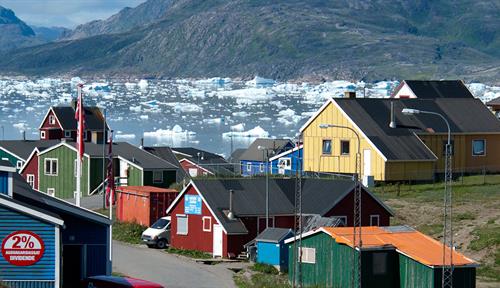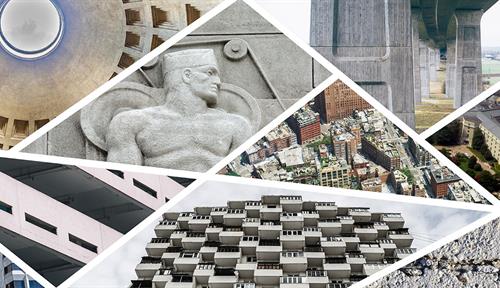The hidden threat from rising coastal groundwater
OPINION: Sea level rise won’t hit just homes on shorefronts, but also the infrastructure beneath our feet
Support sound science and smart stories
Help us make scientific knowledge accessible to all
Donate today
When people think about sea level rise, many picture scenarios like flooded coastlines in Florida or Bangladesh, and beachfront homes succumbing to erosion on the Outer Banks of North Carolina. But some of the most significant threats to our communities are going unnoticed, underground.
The ocean is in direct contact with coastal groundwater. If you’ve ever built a sandcastle on the beach, digging a moat that fills with water from below, you’ve experienced this firsthand. As sea level rises, coastal groundwater levels rise too.
Cities have a crucial network of underground infrastructure, including water pipes, sewer systems, stormwater drains, electrical and fiber-optic lines and support structures for roadways and buildings. As coastal groundwater rises in our urban areas, it can flood this subterranean network. Often, that water is salty and corrosive.
Infrastructure failure caused by groundwater rise is already happening in many places, necessitating attention and timely management. Affected areas are seeing flooded basements, structural damage to foundations, corroded rebar, an uptick in water main breaks and overwhelmed sewage treatment plants. They also suffer from excessive rutting and potholing of roadways as the supportive layers underground become saturated. Perhaps most worryingly, buried contaminants are being brought to the surface as rising waters interact with sewage infrastructure, old industrial spills and more.
I am a sea-level-rise flood modeler based in Honolulu, which hosts one of the nation’s longest-operating tide gauges, along with a network of monitoring wells dedicated to observing the rise, and increased salt concentration, of coastal groundwater. The tide gauge has seen a more than 20-centimeter rise in sea level since before World War I. Groundwater has been rising in step.
In 2017, for example, events related to the climate pattern known as El Niño temporarily elevated sea levels by up to 30 cm above tide chart predictions across the Hawaiian Islands. The groundwater in Honolulu rose by nearly 30 cm, too. While this wasn’t surprising to hydrologists, it surprised locals as water seeped up to the surface more than a kilometer from the shoreline. Globally, sea levels are expected to rise about a meter by 2100.
Honolulu is leading the way in researching the influence of rising sea levels on groundwater; researchers here published one of the earliest studies on the topic, in 2012. Today, our Board of Water Supply uses groundwater simulations to help maintain and upgrade infrastructure. And the Hawaii State Department of Health is tracking contamination.
Research published in 2020 suggests that nearly 90 percent of Honolulu’s active cesspools are already compromised during king tides. The health department is also concerned about the upward seepage of lead and hydrocarbons, as well as the possibility of methane-induced underground explosions. While the latter may sound alarmist, it’s a legitimate concern. When petroleum contamination from past spills is immersed in rising groundwater, anaerobic bacteria break it down, leading to methane production. The health department actively tracks unexplained underground explosions in Honolulu that are thought to be linked to this phenomenon.
Honolulu is particularly susceptible to groundwater rise because parts of the city were built on a wetland: During land reclamation projects in the early to mid-20th century, the area was filled with a thin layer of soil for development. Honolulu’s underground infrastructure lies within this thin and porous veneer. But Honolulu is not unique; many major coastal cities were also expanded onto reclaimed land, including San Francisco, Boston, New York, Los Angeles, Tokyo, Osaka, Mumbai, Hong Kong, Singapore, Amsterdam and many others.
In a review paper on this issue, my colleagues and I identified 1,546 coastal urban areas around the world that likely have “critically shallow” groundwater 1.5 meters or less below the surface — a depth known to cause damage to buried infrastructure. Approximately 1.42 billion people live in these areas.
Honolulu takes a proactive approach to identifying groundwater-related issues, particularly in areas like Waikiki, which has financial resources and economic incentives to manage the damage. Three distinct research groups are engaged in developing adaptation plans for Waikiki, all considering groundwater inundation specifically. They plan to elevate infrastructure and catch problems early, knowing that pumping groundwater back down (a common first response) can just cause more saltwater intrusion and subsidence.
Despite this work, a recent survey of Hawaii decision-makers showed that while most are concerned about sea-level and groundwater rise, only 9 percent put it as their top priority. In the US, the sectors overseeing infrastructure for transit and wastewater management lack the necessary resources for basic maintenance, let alone for addressing future challenges. Many low-lying coastal cities around the world have even fewer resources and, in turn, face a chronic and escalating deterioration of critical infrastructure.
Groundwater inundation has the potential to cause overwhelming amounts of damage and to exacerbate social inequalities. We need to proactively tackle the current and impending flood of problems.
10.1146/knowable-020724-1
TAKE A DEEPER DIVE | Explore Related Scholarly Articles






